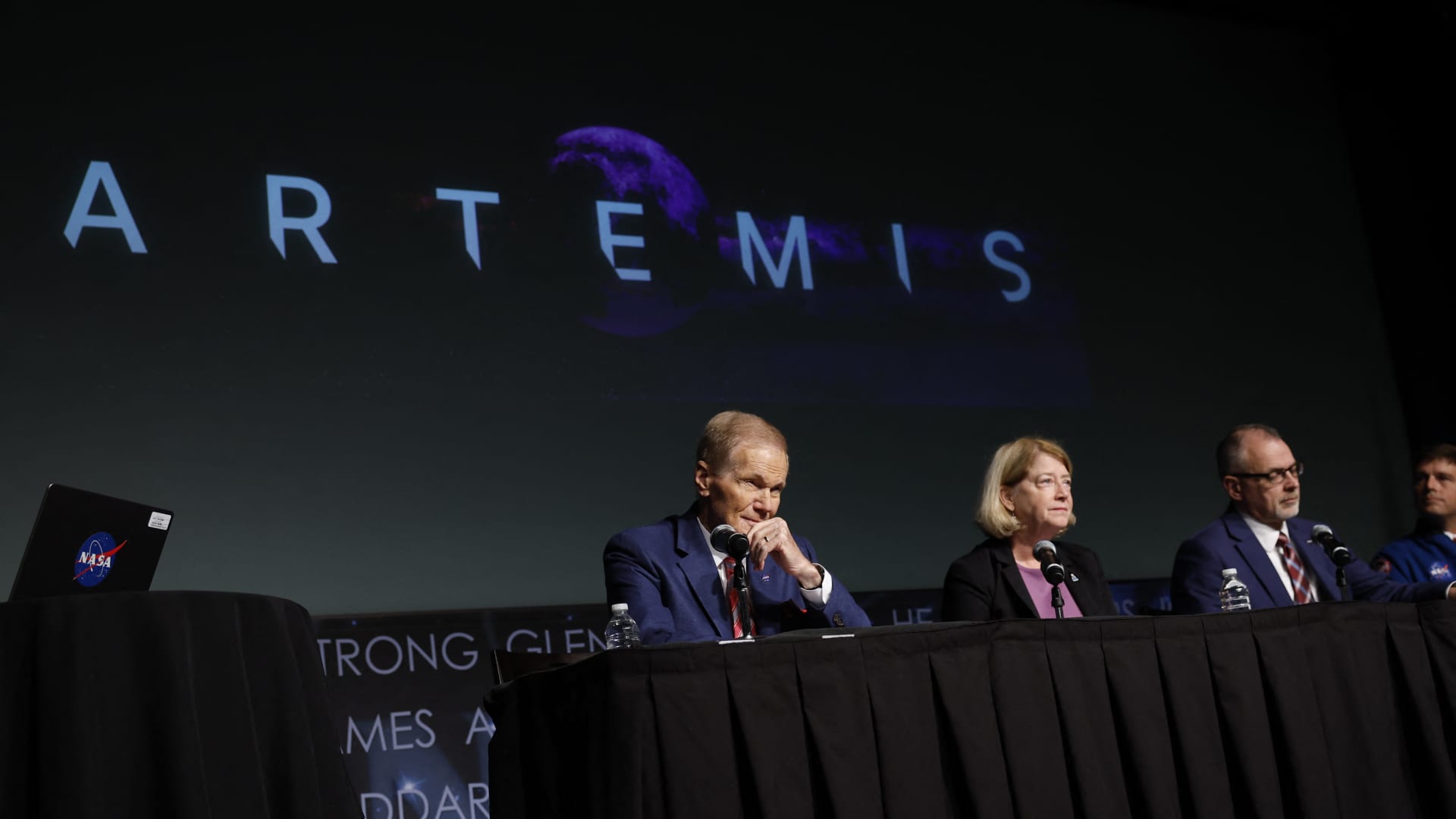NASA Administrator Bill Nelson (C) speaks during a news conference about the agency’s Artemis campaign at the James E. Webb Auditorium at NASA Headquarters in Washington, DC, on December 5, 2024.
Amid Farahi | Afp | Getty Images
NASA chief Bill Nelson announced on Thursday new delays in the U.S. space agency’s Artemis program to return astronauts to the moon for the first time since 1972, pushing back the next two planned missions including the planned lunar landing.
Nelson told a news conference that the next Artemis mission, sending astronauts around the moon and back, has slipped to April 2026, with the subsequent moon landing mission pushed to 2027.
The Artemis program was established by NASA during President-elect Donald Trump’s first administration with the goal of returning astronauts to the moon for the first time since the U.S. space agency’s Apollo 17 mission. The program is intended to establish a lunar base as a step toward the more ambitious goal of human missions to Mars. The United States is estimated to spend roughly $93 billion on the program through 2025.
The Artemis program has made noteworthy progress but also has experienced various delays and rising costs. In 2022, NASA carried out the Artemis I mission, a 25-day uncrewed voyage around the moon ending when the Orion capsule carrying a simulated crew of three mannequins made a successful splash down in the Pacific.
That marked the first flight of NASA’s massive Space Launch System rocket, a powerful and over-budget vehicle tasked with launching humans to space aboard the Orion capsule built by Lockheed Martin. SpaceX’s Starship is contracted to land astronauts on the moon’s surface.
The follow-up Artemis II mission, a flight carrying astronauts around the moon in Orion but without a landing, has experienced delays, including one announced by Nelson in January pushing back its time table to September 2025. Nelson on Thursday said it would be further delayed until April 2026.
The Artemis III mission is planned as the lunar landing. Nelson in January said that mission was pushed back to September 2026. Nelson said this will now be in mid-2027.
NASA is using SpaceX, Lockheed Martin, Boeing and other contractors in the Artemis program.
The trip by the Artemis astronauts to the moon is planned as a relay among multiple spacecraft in space, initially launching off Earth aboard Orion then transferring in space to the Starship system to go to and from the lunar surface.
The United States and China, an ascending power in space, are racing to land astronauts on the moon. Both nations are courting partner countries and leaning on private companies for their moon programs.
The Artemis program has been NASA’s top priority under Nelson. The program will lean heavily on SpaceX’s Starship rocket. Trump’s first NASA chief, former U.S. congressman Jim Bridenstine, launched the Artemis program and persuaded Congress to increase the agency’s budget to fund it. Trump has picked billionaire businessman Jared Isaacman, an associate of SpaceX founder Elon Musk, to succeed Nelson as NASA chief.
SpaceX is hoping for swift advances in Starship development during the second Trump administration, whose space agenda is expected to give the Artemis program a greater focus on the more ambitious goal of landing people on Mars, Musk’s premier space aspiration.
